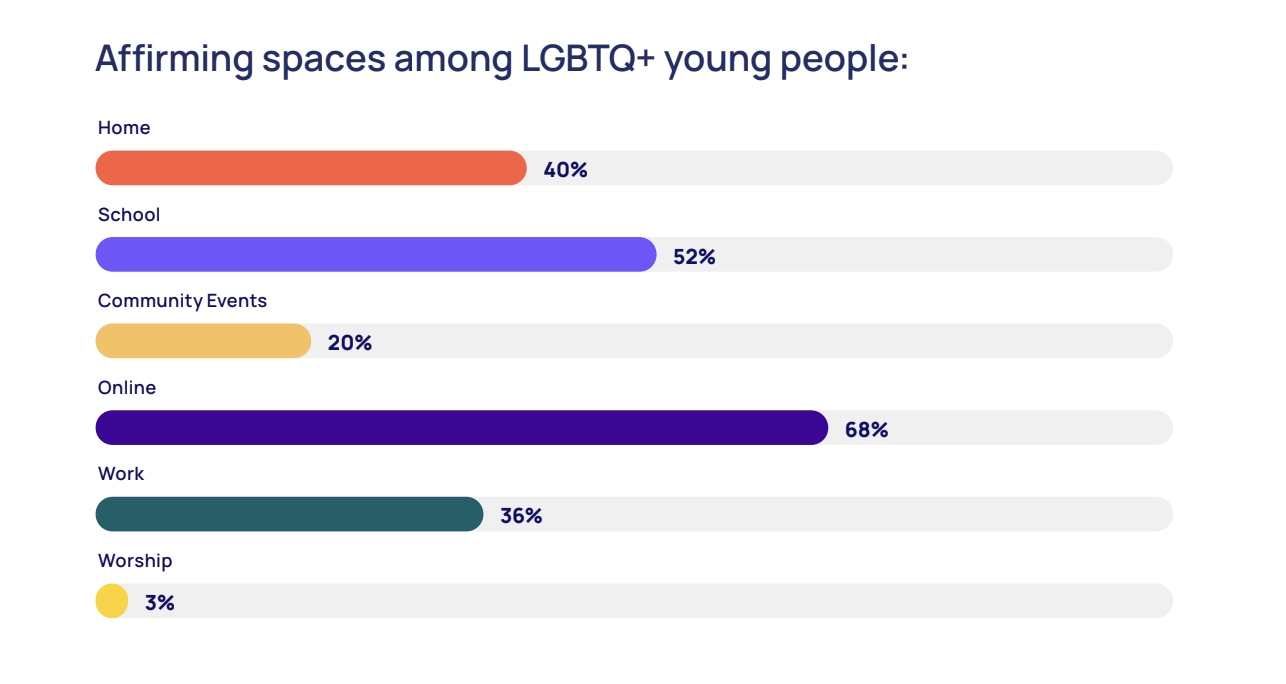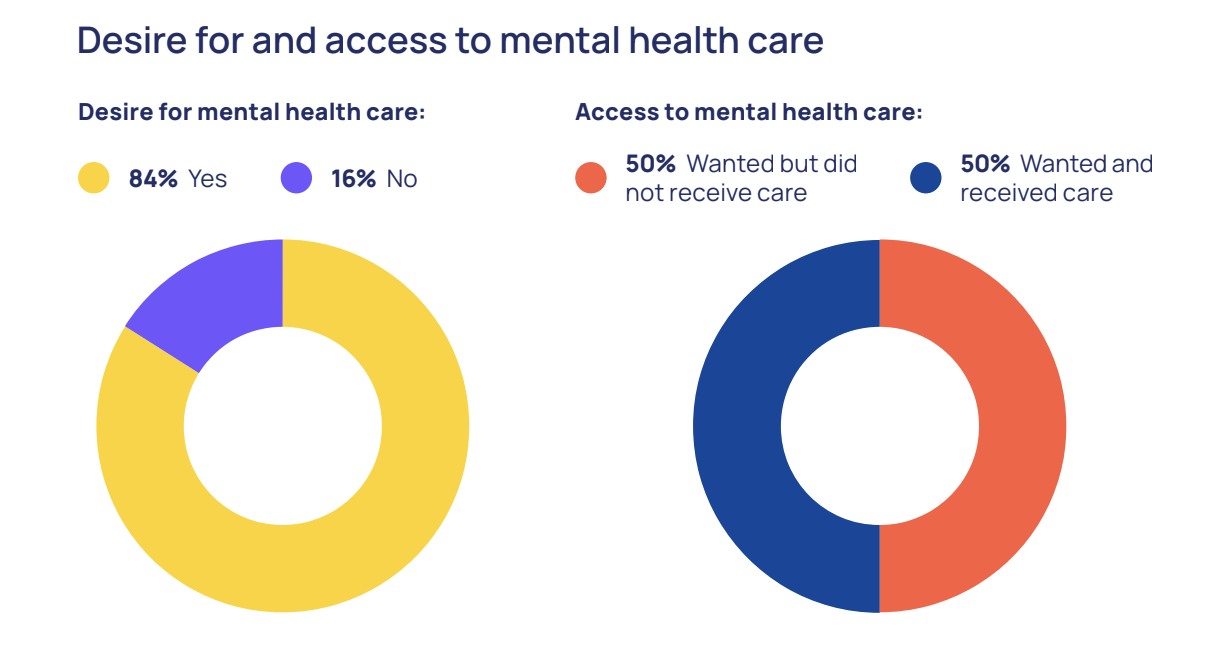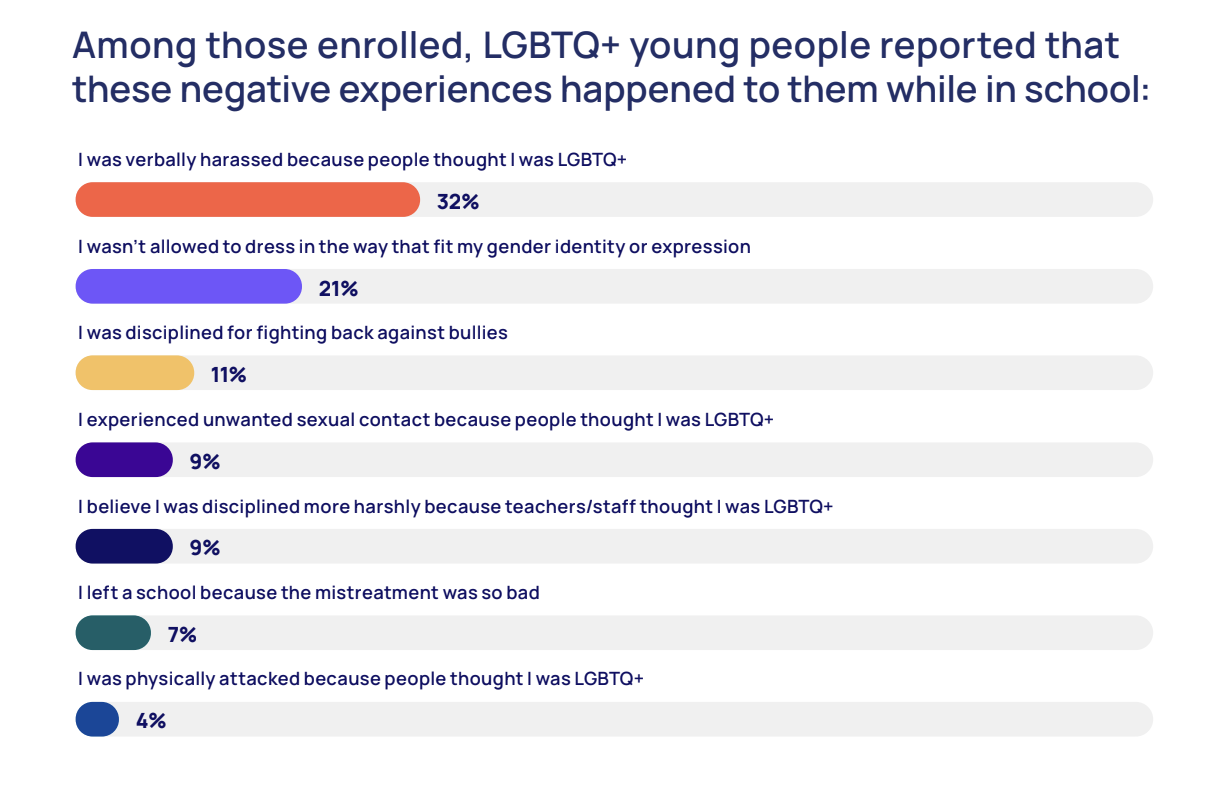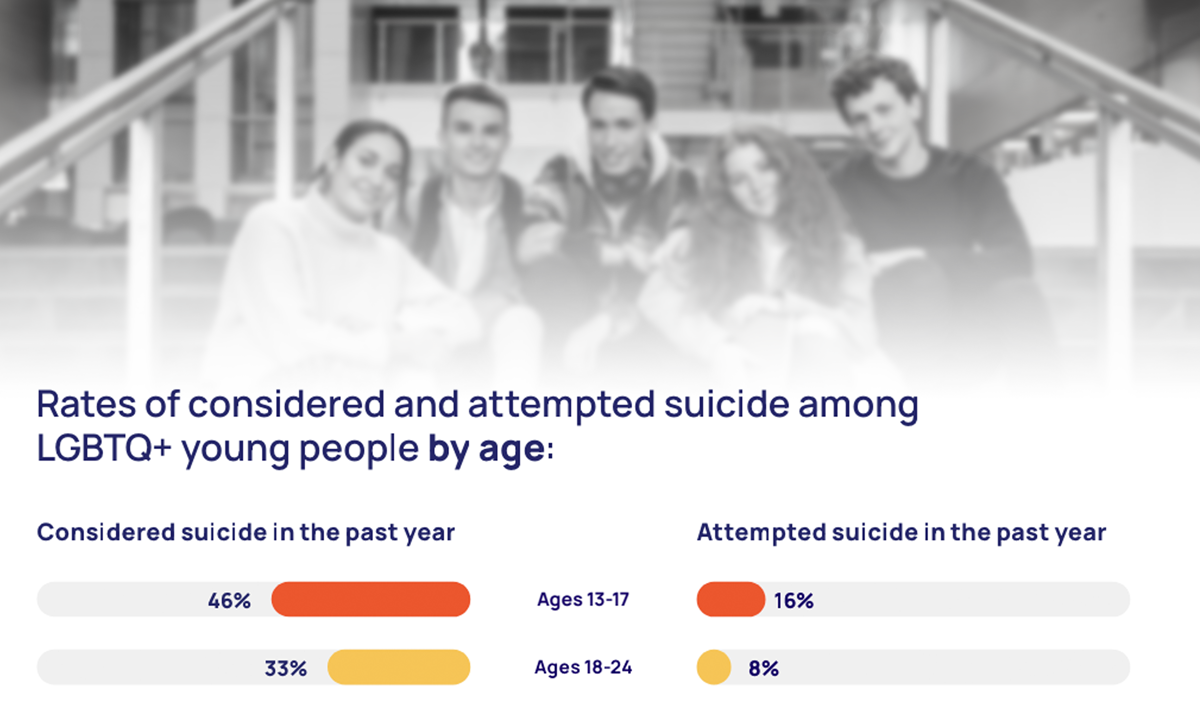Four out of every 10 LGBTQ youth seriously considered suicide in the last year, and 12% attempted it, according to a new mental health survey from The Trevor Project.
Nearly one fourth of respondents reported being physically harmed or threatened during the previous year. Youth who were physically attacked or menaced were three times more likely to attempt suicide.
A third of those surveyed were victimized in school because of their perceived sexual orientation or gender identity. One-fifth were prevented from wearing clothes that align with their gender and 11% were disciplined for standing up to bullies. Seven percent said they left a school because of mistreatment.
“Our country is grappling with a youth mental health crisis, and it is particularly pronounced for LGBTQ youth,” says Ronita Nath, Trevor’s vice president of research.
Suicide rates among transgender and nonbinary youth are significantly higher than for their cisgender peers.
More than 8 in 10 overall wanted mental health care, but half were unable to get it. More than 40% said they were afraid to talk to someone. Cost and transportation were frequently cited as barriers, says Nath. Young people also said they were afraid to ask their parents or caregivers for help.
Ninety percent said the political climate has had a negative impact on their well-being, while 45% reported they or their family have considered moving to another state because of LGBTQ-related politics or laws.
Nath says, “It’s very important that this year we contextualize this in a political context.”
According to Trevor’s tally, so far in 2024 lawmakers have considered 540 anti-LGBTQ bills nationwide. Nath says she expects headlines and political rhetoric to continue to spark anxiety and depression among queer youth in the runup to the presidential election.
Two-thirds of LGBTQ youth said they had recent symptoms of anxiety, a rate that rises to 71% among gender-nonconforming young people. More than half suffer from depression.
Consistent with past surveys, the new poll found more youth get support at school than at home, work, church or in the community. A little more than half — 52% — of respondents said school is affirming, versus 40% who said they feel supported at home. Transgender and nonbinary youth are slightly more likely to find school affirming but feel unsupported at home.

Reasons for feeling safe at school include the existence of a club such as a gay-straight alliance — also known as a GSA — zero-tolerance anti-bullying policies, and the ability to wear preferred clothing and use desired pronouns.
Nine percent of students who were able to use a gender-neutral bathroom at school attempted suicide, versus 15% of those who were not. Young people who said their school is supportive were four points less likely to have tried to take their own life, 10% versus 14%.
“There is a real critical need for schools to adopt protective policies,” says Nath.
The annual survey, the organization’s sixth, was administered to 18,000 LGBTQ people ages 13 to 24 last fall. In response to virtually every question, gender-nonconforming youth reported more negative experiences than cisgender gays, lesbians and bisexuals, and young people of color more than their white peers.

Asked about ways people in their lives can show support, nearly 9 in 10 of those surveyed said they wanted to be trusted to understand their identity and 81% want others to stand up for them.
Among transgender and nonbinary youth, 13% said they take gender-affirming hormones, while just 2% are on puberty blockers. Two-thirds of those who take hormones worry about losing access to care.

“Every time we look at one of these variables, across the board we saw higher rates of suicidality,” says Nath. “LGBTQ youth face hardships their cisgender, straight peers simply don’t.”
